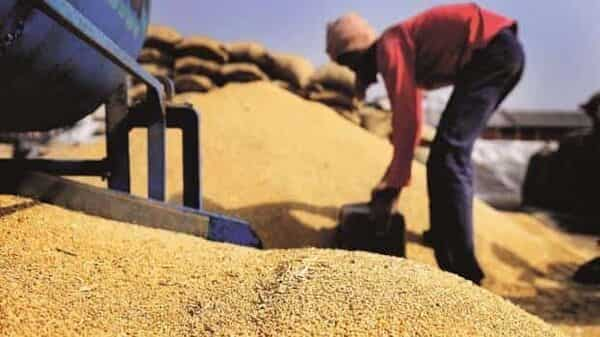India’s decision to restrict wheat export is disappointing but not a big surprise. Banning exports has been the government’s standard response to any shortage of agricultural commodities, denying farmers the benefit of global prices when these are high. The political economy favours the government taking tough measures to protect the consumers — more numerous and more vocal than producers — even if these measures go against the grain of economic sense.
The government has banned new wheat export contracts by the private sector, leaving it open for the government to still export wheat through the government-to-government channel. India’s good neighbourliness depends on sustaining the regular export of wheat to Bangladesh and the humanitarian aid to Afghanistan.
Why is there a shortage of wheat? There is no absolute shortage. This year’s wheat production was expected to be a record 111 million tonnes, but the recurrent cycles of dry and hot weather from March onwards have shrivelled the burgeoning kernels of the wheat crop in most wheat-growing areas other than Madhya Pradesh, where the crop is harvested by mid-March. As a result, the current wheat output estimate is 97 million tonnes. Not that this is a particularly miserable output, particularly as Indians do not really feed grain to animals to eat their meat later on. However, the government has not been as successful this year in procuring wheat as in the past.
This is because of the steep rise in global wheat prices, by as much as 45%, as supplies from Russia, the biggest exporter of wheat, and Ukraine, the fifth-largest exporter, have been thwarted this year, thanks to the war. Private exporters of wheat have been offering farmers prices significantly higher than the minimum support price at which the government procures its requirement, ₹2,015 per quintal.
Still, the government is expected to procure 18.5 million tonnes. Combined with an opening stock of 19 million tonnes accumulated from procurement in past years, the government should command 37.5 million tonnes. The buffer stocking norm for 1 April is 7.5 million tonnes. That leaves the government with 30 million tonnes, enough to meet the requirements of the public distribution system and regular welfare measures. However, the pandemic relief by way of the Pradhan Mantri Garib Kalyan Yojana, under which 800 million people are entitled to, in addition to their regular supply under the public distribution system, 5 kg of rice/wheat and 1 kg of lentils per person per month for free, has seen considerable additional offtake of wheat and rice. Therefore, allocations to this scheme would need to be curtailed unless the government wants to augment its procurement at a higher price or tell the would-be buyer that she is welcome to the grain of her choice, so long as it is rice.
Against the buffer stocking norm of 13.6 million tonnes of rice for 1 April, the Food Corp. of India held 33.3 million tonnes of rice and 26.6 million tonnes of paddy (after milling, it would yield some 19 million tonnes of rice) as of 1 May.
Does it not make sense to ban food export when its politically sensitive price goes up globally and could trigger a domestic shortage? As a desperate measure, yes, it does. Not just wheat flour but bread and biscuits are at risk of a spike in prices, especially with the shortage of edible oils, following the cessation of supplies of sunflower seeds/oil from Ukraine, a major supplier, and an export ban on palm oil in Indonesia. Baked goods are made from wheat, edible oils and energy. The prices of all three ingredients have risen sharply. So why not ban exports of wheat and contain at least one price?
As a strategic response, banning the export of agricultural commodities lacks sense. A market price at a premium to the minimum support price is a development altogether to be desired. That would allow the government to move away from open-ended grain procurement and create a procurement price separate from the MSP. Such a strategy works best when a market for futures and options is functional for wheat and rice. But futures and options have been banned in grain and several other commodities.
It is conceivable that the government could procure its minimum stocking norm while contracting supplies as needed in the futures market, competing with private trade to secure enough grain to meet its welfare requirements, and seeking delivery at the distributed destinations in different parts of states. This would let the private sector efficiently store food stocks and transport them around the country to reduce the Food Corp. of India’s expenses on similar functions and spoilage and pilferage. Moreover, allowing a market to function in agricultural commodities would permit farmers to cultivate crops in short supply, diversifying away from grain.
But the zeal the government showed in pushing its farm laws through the legislature is not visible when it comes to grabbing an opportunity presented to it by global developments to get India’s agricultural act closer to where it should be instead of relying primarily on subsidy.
Subscribe to Mint Newsletters * Enter a valid email * Thank you for subscribing to our newsletter.
.




